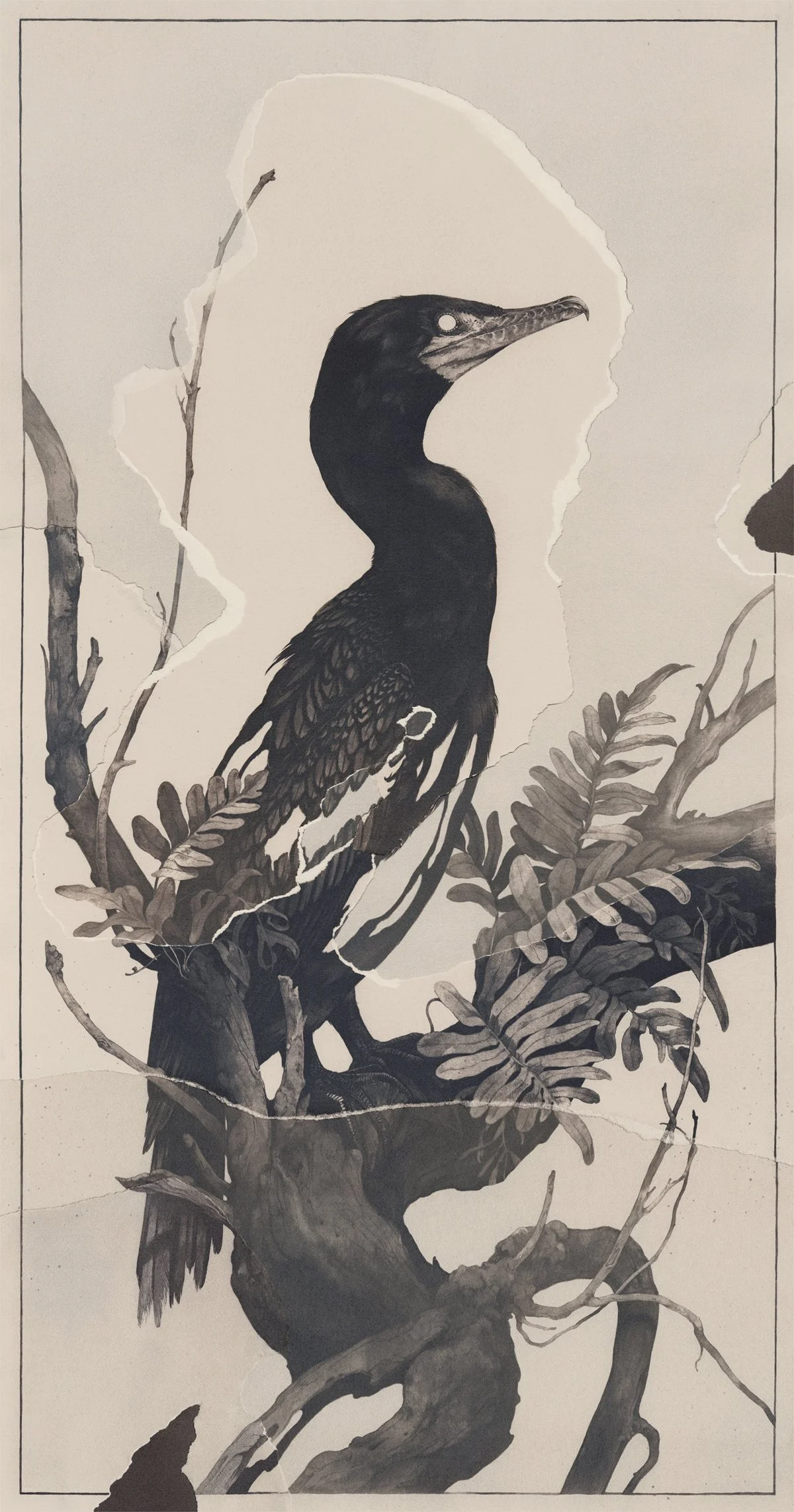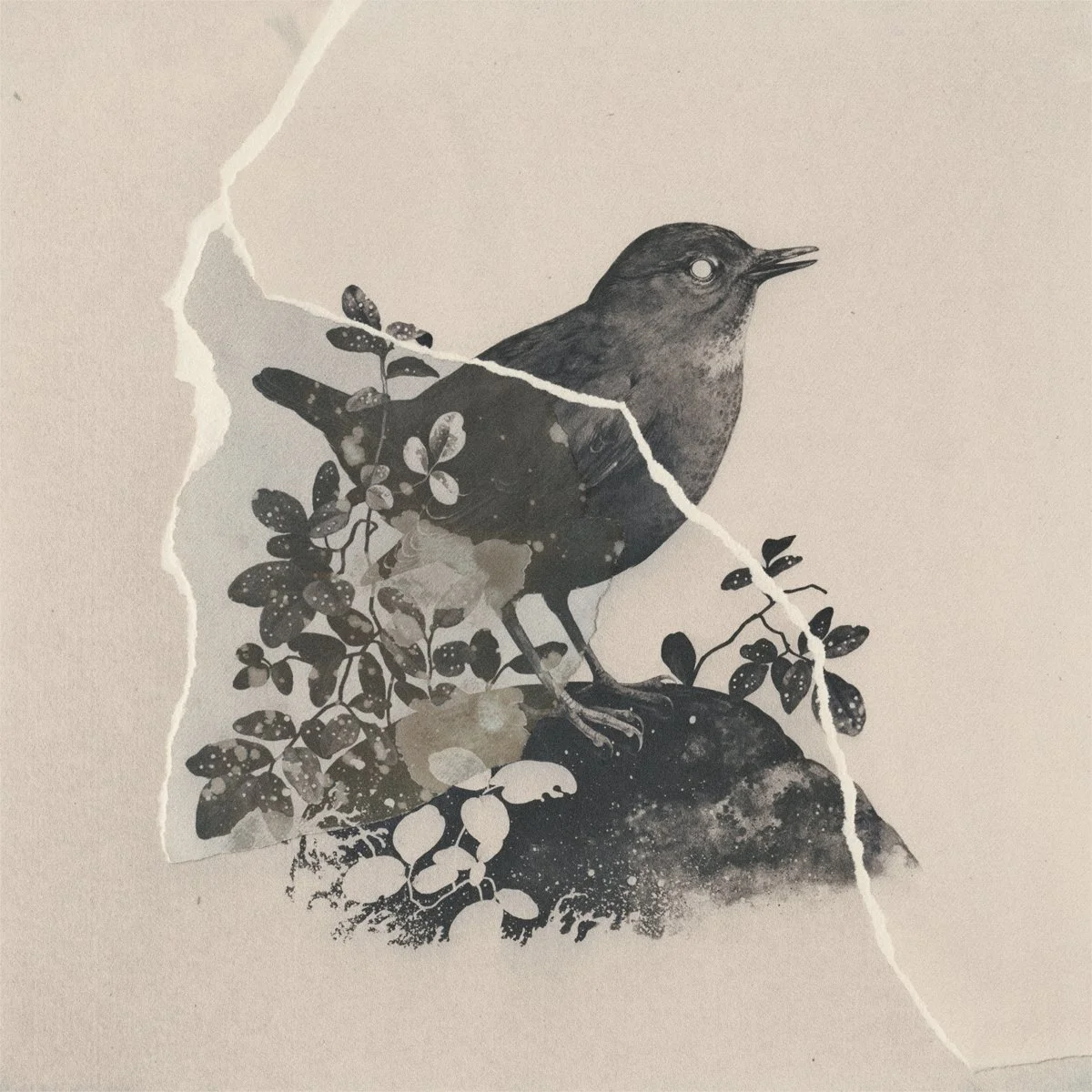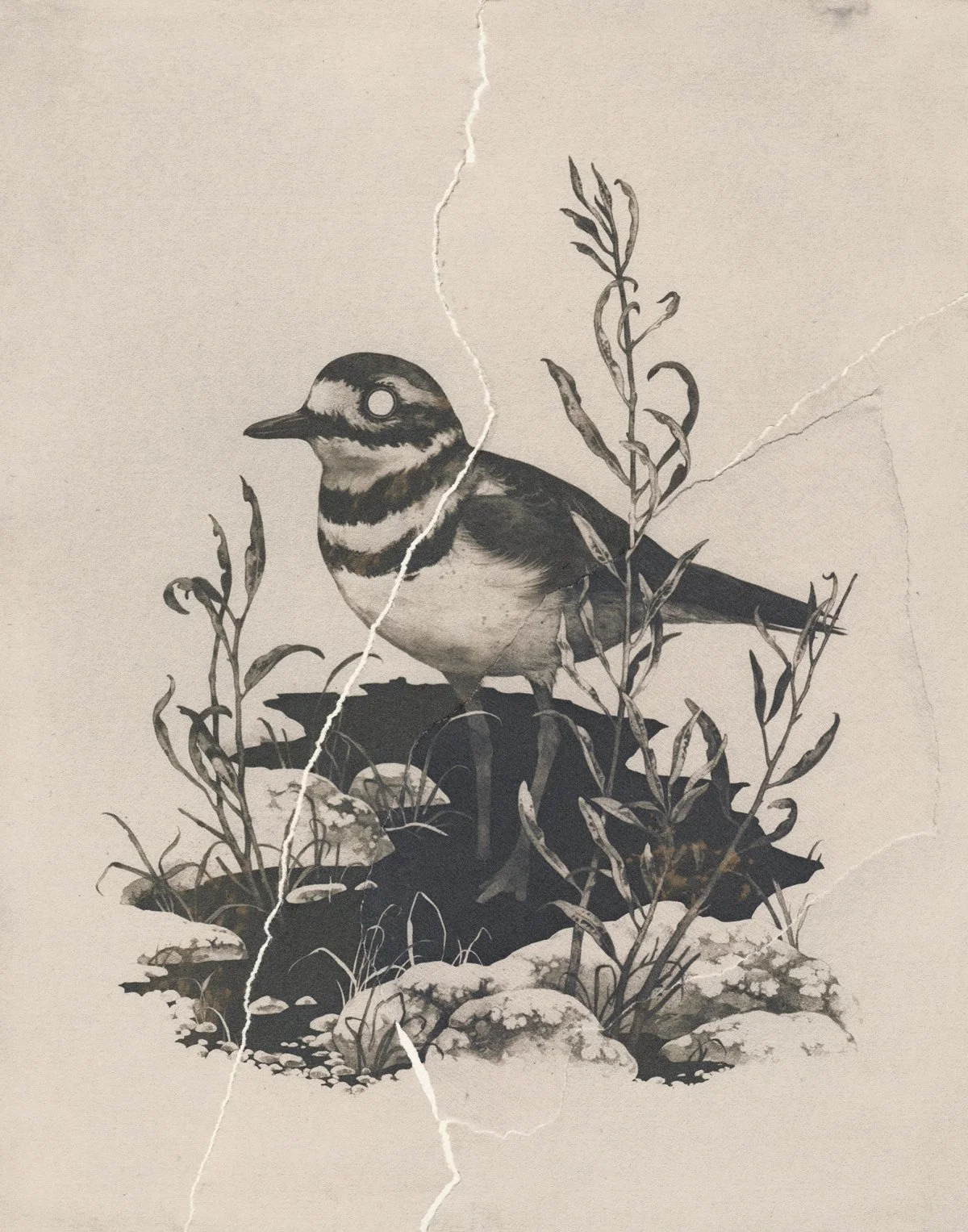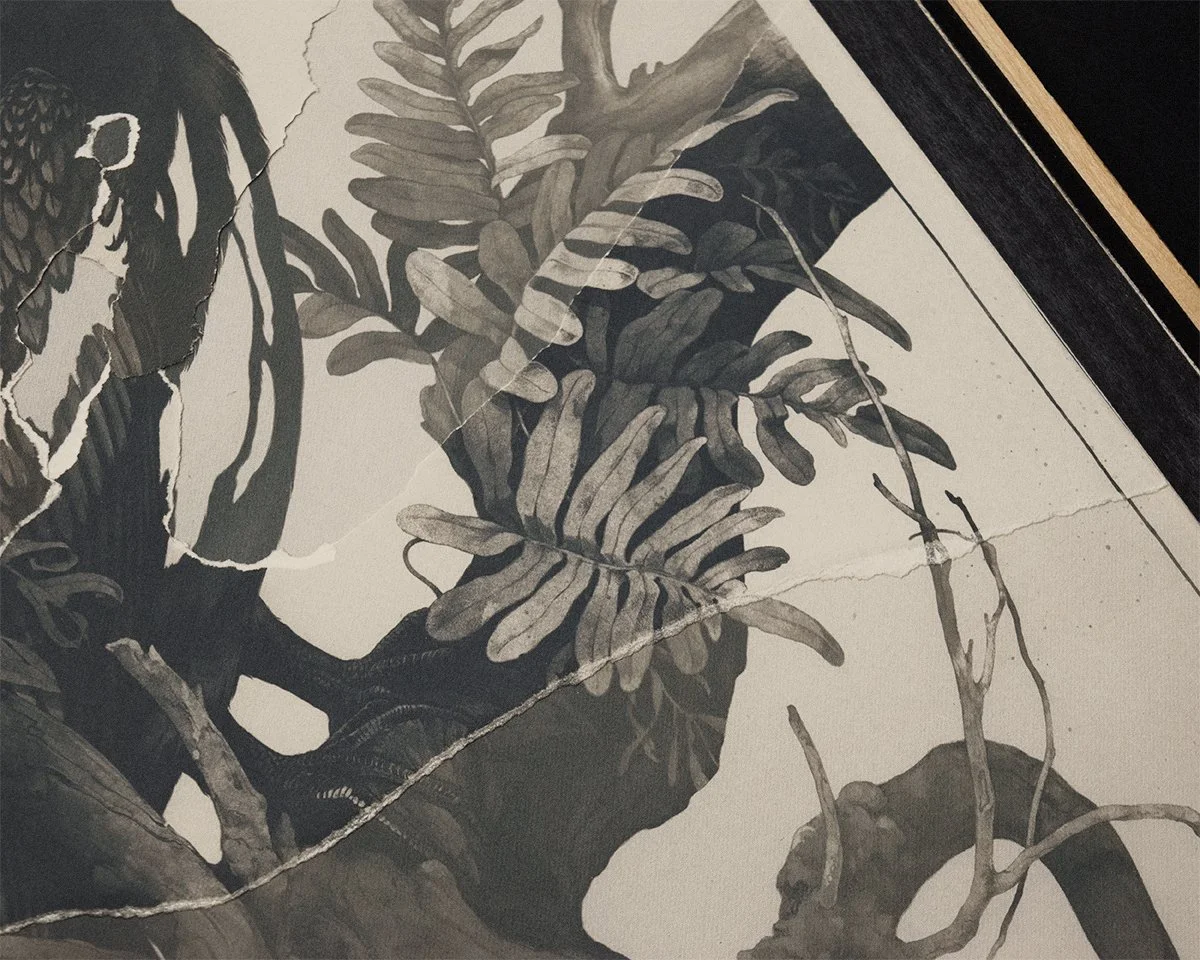Communicating Vessels (a valley waiting to be filled) | 16" x 30" | toned cyanotype, collage, & watercolor on paper
Missing Pieces (hearing vacancy, feeling absence, seeing voids) | 16" x 30" | toned cyanotype, collage, & watercolor on paper
Omens (snowberry post-infection; willow on what was once a floodplain) | 8" x 8" | gouache, watercolor, & colored pencil on paper
Artificial Worlds | 12" x 12" | toned cyanotype & collage on paper
Omens (salal die-off; white oak after the fire) | 8" x 8" | gouache, watercolor, & colored pencil on paper
Shifting Baselines | 11" x 14" | toned cyanotype & collage on paper
Omens (rose spirea in false autumn; lupine during heat wave) | 8" x 8" | gouache, watercolor, & colored pencil on paper
Half-Truths & Fictions | 11" x 14" | toned cyanotype & collage on paper
drought
parasol projects x antler gallery
new york city
october 2021
My solo show Drought was exhibited at Parasol Projects, hosted by Antler Gallery, alongside the group show Wilderness II, which I co-curated with Antler.
All there really is is water, or the lack of it. It is the end of my third year in the Pacific Northwest, and already the changes brought on by severe drought are apparent all around: dry wetlands and low creeks, struggling wildlife, amber foliage as far as the eye can see. We lose the smokeless sky the way we lost the starry one — gradually and quickly — yet there is plenty left to rob ourselves of.
“Drought” is not a celebration or idealization of Nature, but work born of anxious feelings in worsening times. It is an attempt at depicting things how they really are, in spite of our optimistic attempts to perceive them otherwise: broken, stitched together, half-remembered, pieces lost along the way. The unpredictable sunprinting process of cyanotype has been used to intentionally degrade the delicately illustrated imagery, with fragments of replicated images collaged together into a fractured view of the originals. Waterbirds and their remnant habitats dominate the scenes, but water itself is conspicuously absent. In contrast, the botanical “Omens” are painted in stark clarity, a sampling of the many manifestations of drought on Oregon’s plant life witnessed in the past year.
The work is meant to mirror the experience of viewing Nature in a time when it has been subjected to unrelenting exploitation, and scattered restoration efforts are unable to erase the history of that abuse, or repair our human relationship with the ever-shrinking wildlands and the creatures that inhabit them. As the Earth becomes increasingly lifeless and artificial and our baseline expectations shift along with it, our ability to imagine a life spent in direct contact with Nature, the life that belonged to our species for millennia, is rapidly fading. The fractures are built into the framework now, and if we try to repair them, won’t our whole way of life come crashing down? But we are still what we always have been: ten thousand or more communicating vessels, waiting for rain and each nearly empty on their own, but if we all poured the little bit left in us downhill… Maybe just enough to fill the valley. To dissolve our boundaries and rejoin the whole.
Process notes:
The collage works were created using cyanotype, a process in which paper coated with light-sensitive emulsion is exposed to sunlight, then developed in water to create a photographic reproduction. Each cyanotype is unique, with many variables such as chemistry, sun intensity, exposure time, water pH, and manual technique contributing to the appearance of the final image. In this case, the prints have been bleached and toned to convert the characteristic prussian blue color of cyanotypes to a dark, earth-toned palette. The final pieces are composites of between 2 and 6 unique cyanotype prints. In addition to these works resulting from collaboration with the sun (and, at times, the wildfire smoke in the air), each print has gone through multiple rounds of rinsing and soaking in water at various stages, which over time took on a ritual-like significance; the paper holds the memory of the water that is missing from the scenes imprinted on it.












